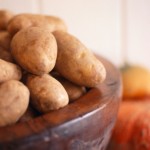Dry Conditions For Idaho’s Dryland Farmers

Molly Messick / StateImpact Idaho
In mid-May, high winds and the lack of rain had left some Power County fields dry and dusty.
Last year, farmers and ranchers in southeast Idaho had a hard time getting crops in the ground because of persistent wet weather. This year they’re facing the opposite problem, as weeks have passed without substantial rainfall.
University of Idaho agricultural economist Paul Patterson says irrigated areas in the region are faring well because of water left in storage from last year. But dryland farmers, whose croplands aren’t irrigated, are less fortunate. Those south of the Snake River in Power, Bannock and Oneida Counties appear to be hardest hit.
Patterson says that if dry conditions prevail, losses could mount. “Potentially it could certainly run into hundreds of thousands or on the bigger farms even millions of dollars,” he said. “It has a significant impact, and not only on those farmers, but also in the local communities because when the farmers get hurt, that’s money that doesn’t get spent through the community.”
The dryland areas that have suffered most this year are dedicated to wheat and barley, along with some oil seed production, Patterson says. Cow-calf operations could also be hurt, if the lack of rainfall makes for bad grazing conditions.
Hydrologist Ron Abramovich with the Natural Resources Conservation Service says this year is exceptional because conditions vary so much across Idaho. In the Idaho Panhandle, snowpack stands at 150 percent of average. Meanwhile, a drought emergency was declared for part of Clark County earlier this month.
“You don’t usually see that diversity within the state,” Abramovich says. “It really stands out this year.”
